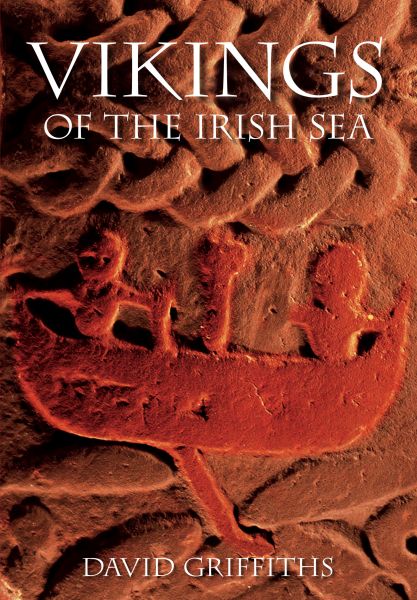Vikings of the Irish Sea
Vikings began raiding islands and monasteries on the Atlantic fringes of Europe in the 790s. The Irish Sea rapidly became one of their most productive hunting grounds. Attacks, battles and destruction were accompanied by trade – in slaves, silver and fine objects.
Vikings crossed and re-crossed the Irish Sea in search of land, wealth and power. Raids were followed by settlement, first in fortified camps, and later in towns, market enclaves and rural estates. Vikings came into contact with existing populations in Ireland, Britain and the Isle of Man. Viking paganism, demonstrated by spectacular burials, was gradually eclipsed by Christianity. By 1050, the process of assimilation was well under way, yet Viking influence and distinctiveness did not altogether disappear.
This updated edition of Vikings of the Irish Sea takes the sea as its starting point and looks afresh at the story of a supremely opportunistic people who left their mark in ways that still resonate today.
- Title
- Copyright
- Contents
- List of Illustrations
- Preface
- Chapter 1: Introduction
- Vikings
- The Irish Sea
- 'The Irish Sea Province'
- The Irish Sea in the pre-Viking period
- Sources of evidence for the Viking period
- Chapter 2: Raids and Early Settlement in Ireland
- Longphort and dún: the Viking base on land
- 'Dark' and 'fair' foreigners, and the 'Gallgoídil'
- Chapter 3: Exporting Violence and Seeking Landfall c. 850–c. 1050
- Weakness and opportunity: Galloway and Cumbria
- From Dublin to Brunanburh
- The later tenth and early eleventh centuries
- Chapter 4: Land-take and Landscape
- Estates and landholding
- Territory, boundaries and defence
- Meetings and 'things'
- Rural settlement archaeology
- Chapter 5: Burial: Changing Rites, New Places
- Regional surveys 1: Ireland
- Regional surveys 2: The Isle of Man
- Regional surveys 3: From the Solway Firth to Wales
- Viking-period finds and burial in churchyards
- Chapter 6: Trade, Silver and Market Sites
- Hoards and currency
- Single finds and market sites
- Chapter 7: Towns and Urbanisation
- Tenth- and eleventh-century Dublin
- Anglo-Saxon urbanisation and tenth-century Chester
- Trade in the Bristol Channel, and the later Hiberno-Norse towns
- Chapter 8: Assimilation and Cultural Change
- Burial and commemoration
- Religious conversion and Viking motifs
- An Irish Sea metalwork tradition?
- Architecture: urban and rural
- Language and inscriptions
- Hybridity and acculturation – the process of cultural change
- Chapter 9: Conclusion
- List of Abbreviations
- Notes
- Bibliography
'The seas around Britain and Ireland provided the corridors through which people and ideas spread. In this highly original study of the Irish Sea, David Griffiths offers a vivid insight into the huge social and economic impact brought about by the Norse seafarers who flooded into the region between the 8th and 11th centuries. The mass of archaeological evidence, much of it recently discovered, is here skilfully analysed to offer a fresh, and often surprising, insight into the dynamics of this energetic maritime society.' weniger anzeigen expand_less
Versandkostenfreie Lieferung! (eBook-Download)
Als Sofort-Download verfügbar
- Artikel-Nr.: SW9780752498546110164
- Artikelnummer SW9780752498546110164
-
Autor
David Griffiths
- Wasserzeichen ja
- Verlag The History Press
- Seitenzahl 192
- Veröffentlichung 30.01.2025
- Barrierefreiheit
- ISBN 9780752498546

